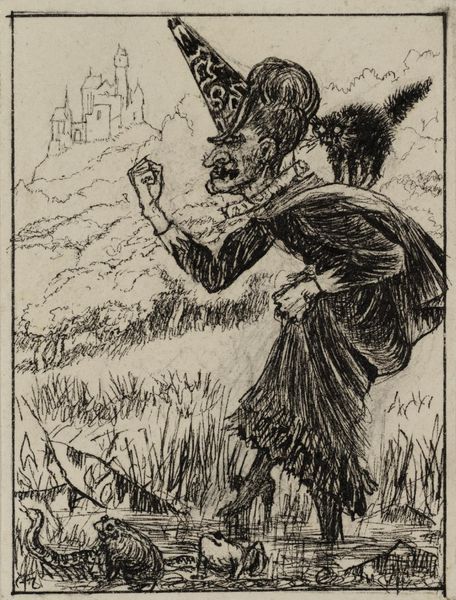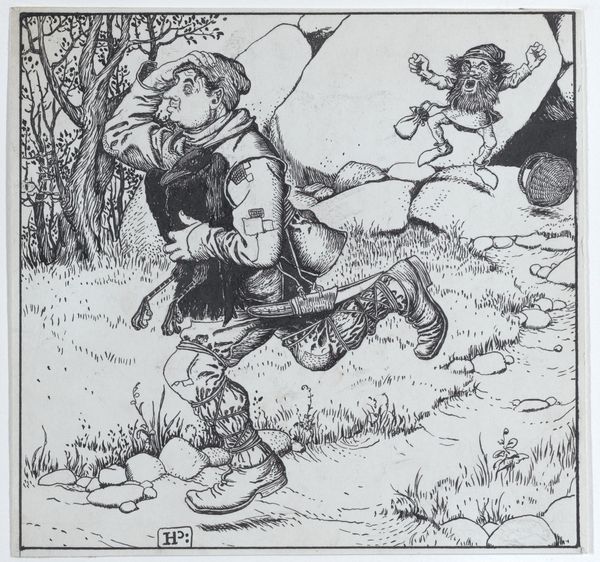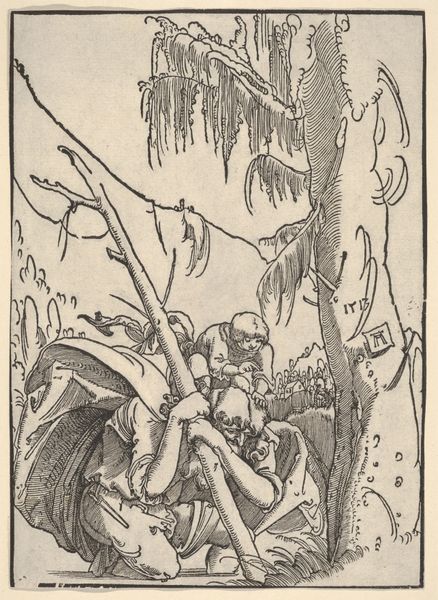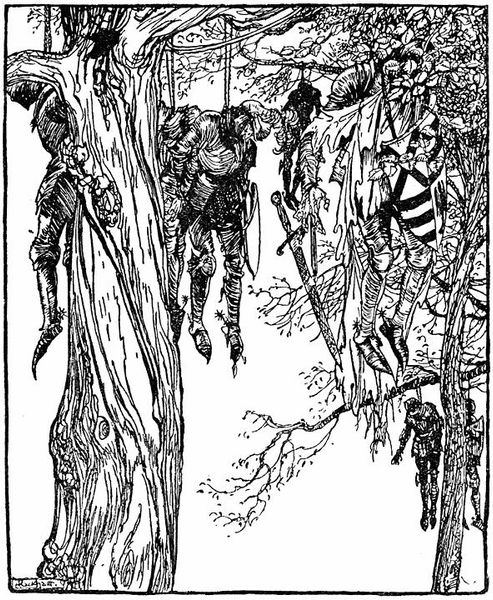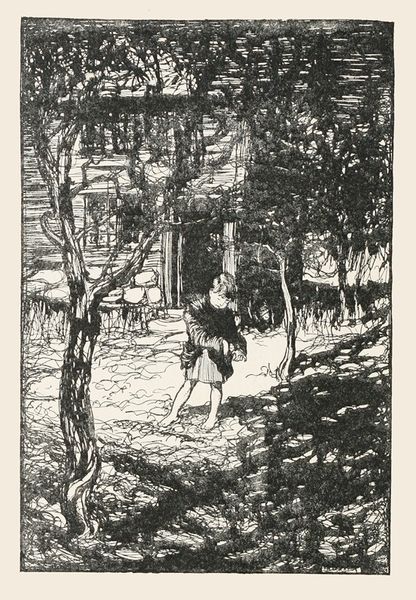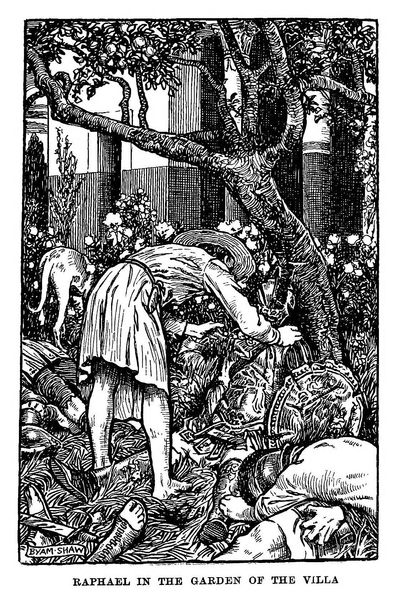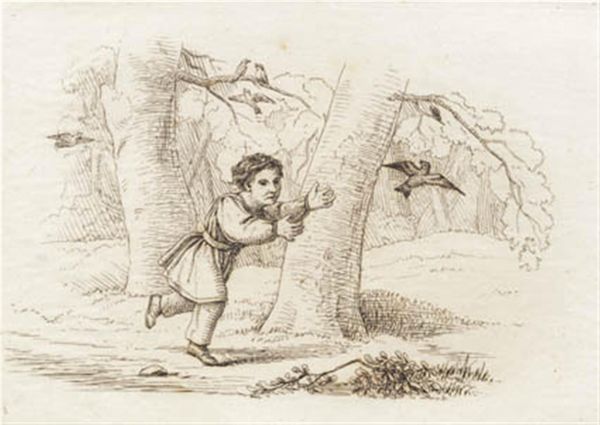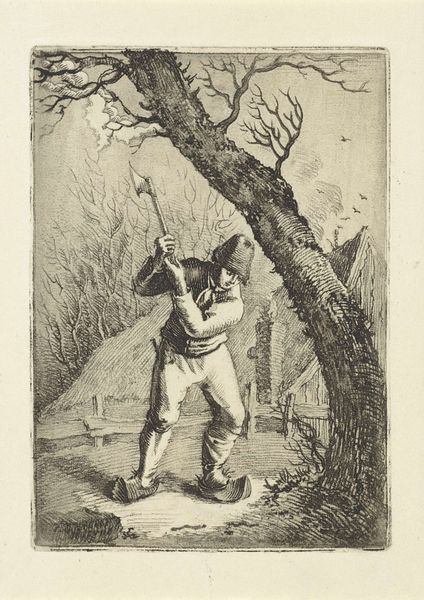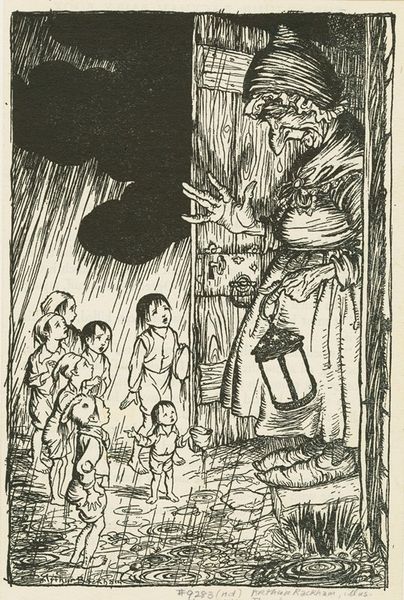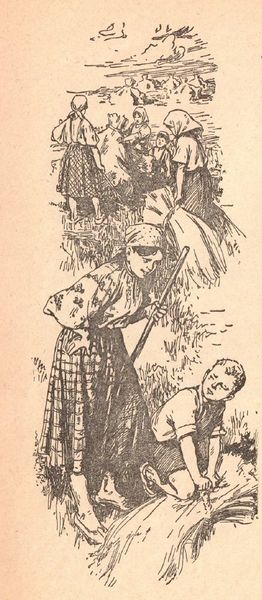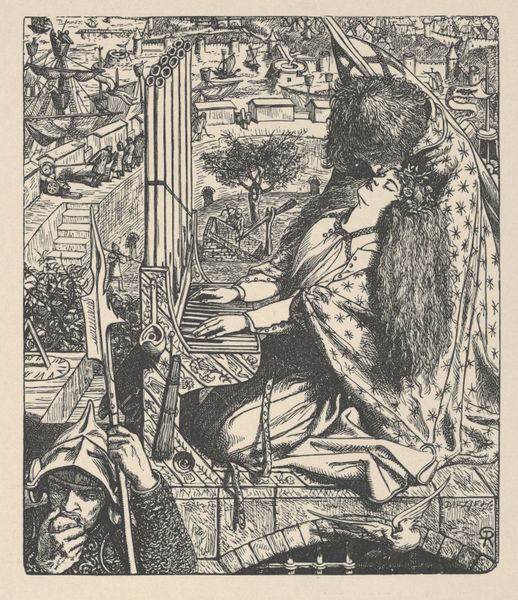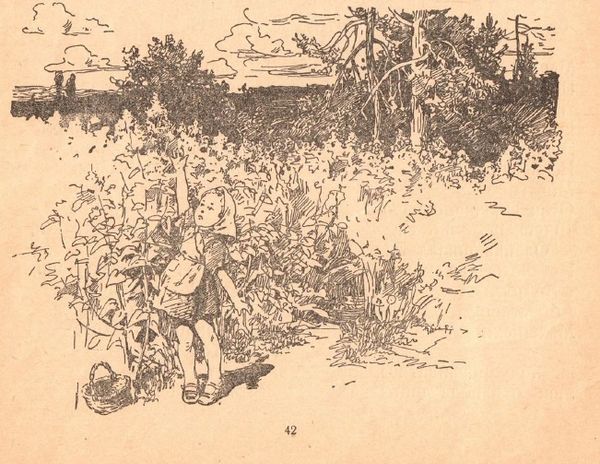
Copyright: Public Domain: Artvee
Curator: Let’s explore this intriguing pen and ink drawing by Arthur Rackham from 1920. The work is titled "Round the fire an indescribably ridiculous little man was leaping." Editor: Well, that's quite a descriptive title. My first impression is one of controlled chaos. The use of line is frantic yet precise, and everything is very textural, creating a strange sense of depth in what's really a flat image. Curator: Rackham's work is often associated with the romanticism and fantasy art movements. Knowing that Rackham also illustrated children's books, it makes me consider how narratives like this one perpetuate stereotypical imagery or offer subversive characterizations. Does this 'ridiculous little man' become a scapegoat figure, or does he challenge conventional heroism? Editor: Interesting point! The figure does command our attention, doesn't he? But I am mostly taken by the artist's masterful use of hatching and cross-hatching, particularly to suggest form and shadow. It is how he built volume with lines that make me think that, even within a rather busy composition, we perceive light and dimensionality. Curator: I find the setting particularly evocative. The haphazard assortment of objects in the background--the well, the clothing, and what seems like a looming structure – almost serve as a stage for the performance of identity, especially considering the history of caricature in early twentieth century fantasy art and the socio-political landscape of the time. Editor: The way you speak of landscape versus figure reminds me how the contrasting textures establish figure-ground relationships. Observe the coarse lines of the tree in the foreground in comparison with the minute strokes describing the figure's outfit or even the softness of the smoke, for example. These graphic devices are key for the image’s effect. Curator: The man's exaggerated features – the nose, the ears, the bandaged head--raise concerns about the representation of difference. Is he empowered in his otherness, or is he made a spectacle? What impact might the illustration's initial audiences had upon children consuming these visual stories? Editor: The expressiveness of the line quality itself also plays a part! The wiry lines convey movement and nervous energy that words alone would never be able to transmit. He invites our gaze, even if his look unsettles. Curator: Reflecting upon it, I still question the ethics inherent in depicting “ridiculous” figures within a narrative framework and in such stylistic exaggeration; who gets included, who gets left out? Editor: And I will still marvel at Rackham's command of form and graphic style! It stands on its own merits.
Comments
No comments
Be the first to comment and join the conversation on the ultimate creative platform.

